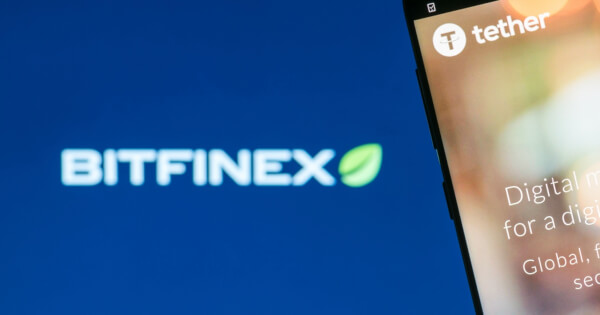Blockchain
Nostr fuels the growth of decentralized Bitcoin (BTC) apps

The rise of a new generation of decentralized, censorship-resistant Bitcoin (BTC) applications on Nostr marks a significant evolution in the Bitcoin app space, according to blog.bitfinex.com. These platforms leverage Nostr’s open and resilient protocol to integrate seamlessly with Bitcoin and Layer 2 solutions like the Lightning Network, improving user privacy, security and autonomy.
No housekeeper, no middleman, no problem
A new wave of Bitcoin-focused decentralized applications (DApps) has emerged, using the Nostr decentralized social media protocol to offer private, censorship-resistant services for the Bitcoin ecosystem. Platforms like Monster, Joinstr, Munstr, Smart Vaults, and Civkit are at the forefront of this movement. These platforms integrate closely with Bitcoin and its Layer 2 solutions such as Lightning Network and, more recently, E-cash on Cashu and Fedi. They aim to improve privacy, security and user autonomy in digital transactions, offering capabilities from peer-to-peer exchanges to sophisticated multi-signature vaults.
Mostro exemplifies this new generation of platforms by providing a peer-to-peer Lightning exchange built on Nostr. It allows users to buy and sell Bitcoin with greater privacy, using temporary keys and an escrow system that minimizes risk while ensuring transactions are secure and decentralized. Mostro’s integration with Nostr ensures that communications are resilient and auditable, maintaining user anonymity and data integrity across the network.
Joinstr offers a decentralized CoinJoin implementation using Nostr, improving the privacy of Bitcoin transactions without relying on centralized coordinators. By facilitating CoinJoin transactions through Nostr, Joinstr ensures user privacy and simplifies the CoinJoin process. Its simple implementation, combined with features such as improved UI/UX and no fidelity constraints, make it accessible and attractive to a wide range of users. Integration with tools like the Electrum wallet further improves its usability.
Platforms like Munstr and Smart Vaults bring advanced multi-signature technology and secure Bitcoin management to the forefront. Munstr uses Nostr for secure, encrypted communications in multi-signature transactions, while Smart Vaults leverages Nostr to orchestrate signatures and collaboratively manage Bitcoin custody. These platforms aim to eliminate friction in the collective management of Bitcoin, providing robust solutions for both individual users and institutional clients. Civkit, on the other hand, combines Nostr with Lightning Network to create a decentralized, permissionless marketplace, promoting financial inclusion and reducing reliance on centralized intermediaries.
A natural evolution always destined to emerge?
The emergence of censorship-resistant private and decentralized applications based on Nostr and Bitcoin aligns perfectly with the core tenets of the cypherpunk movement. Cypherpunks advocate the use of cryptography and privacy-enhancing technologies to create a world where individuals can communicate and transact freely, without interference from centralized authorities. Bitcoin, as a decentralized digital currency, already embodies many of these ideals by enabling peer-to-peer transactions without the need for intermediaries. Building applications on Nostr, a protocol designed for decentralized, censorship-resistant social media, extends these principles to other areas of digital interaction, promoting a more open and resilient online ecosystem.
From an ideological point of view, cypherpunks have long imagined a future in which privacy and freedom are preserved through the use of technology. The integration of Bitcoin with Nostr fulfills this vision by combining the financial sovereignty of Bitcoin with the communication resilience of Nostr. This synergy enables the creation of platforms that not only resist censorship but also protect user privacy, ensuring that individuals can engage in financial and social activities without fear of surveillance or restrictions. The development of such applications is a testament to cypherpunk’s commitment to building systems that empower individuals and protect their rights in the digital age.
The technological advances that have made these decentralized platforms possible are relatively recent, highlighting the importance of timing in realizing the cypherpunk vision. The maturation of the Bitcoin ecosystem, with its security and widespread adoption, provides a solid foundation for financial transactions. At the same time, the development of Nostr as a flexible and resilient protocol for decentralized communication offers the necessary infrastructure to build censorship-resistant applications. The advent of these tools, along with advances in cryptographic techniques and Layer 2 solutions like the Lightning Network, has created a perfect storm of opportunities for innovators to bring cypherpunk ideals to life.
The practical implications of these new platforms are profound. They offer an alternative to the centralized, sometimes opaque, systems of traditional finance. By giving users the ability to control their data, communications and financial transactions, these applications promote a more democratic and fair Internet. This change not only aligns with cypherpunk ideology, but also addresses growing concerns about privacy, surveillance, and the monopolistic tendencies of major tech companies. As these decentralized platforms continue to evolve and gain traction, they represent a significant step towards realizing a freer and more open digital world as envisioned by the pioneers of cypherpunk.
The first trickle in an impending wave of Nostr-based DApps?
The emergence of Bitcoin applications on the Nostr protocol may represent just the beginning of a larger wave of DApps. Given Nostr’s inherent resistance to censorship, combined with the security and financial autonomy of Bitcoin, these initial projects demonstrate the protocol’s potential to revolutionize the way decentralized platforms are built and operated. As the tools and infrastructure for developing on Nostr become more accessible and refined, we are likely to see an influx of diverse and innovative DApps that leverage the protocol’s strengths. This could lead to a thriving ecosystem of decentralized, privacy-focused applications that challenge the dominance of centralized platforms, further promoting the ideals of financial sovereignty and personal freedom within the digital landscape.
Image source: Shutterstock
